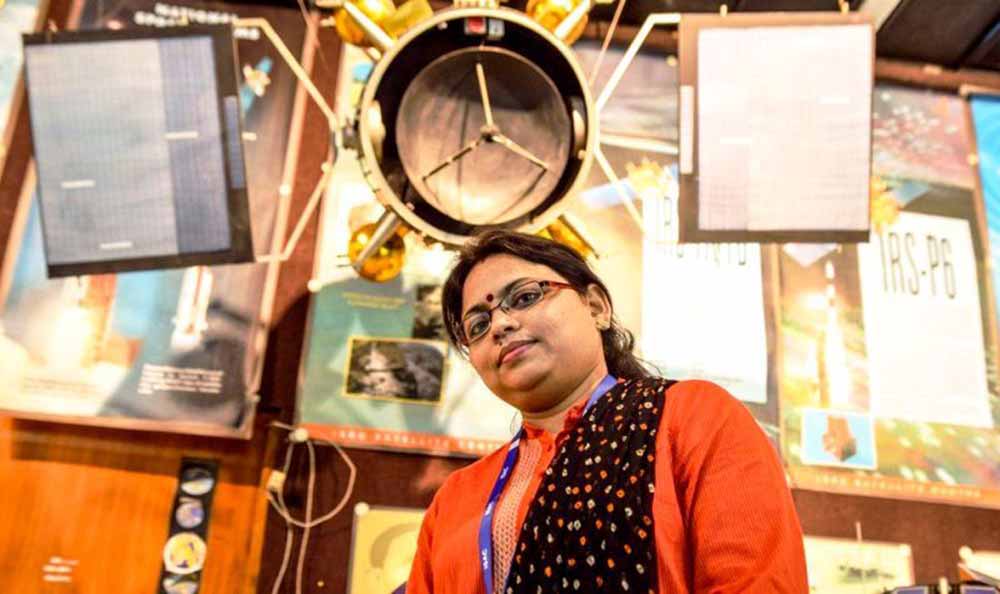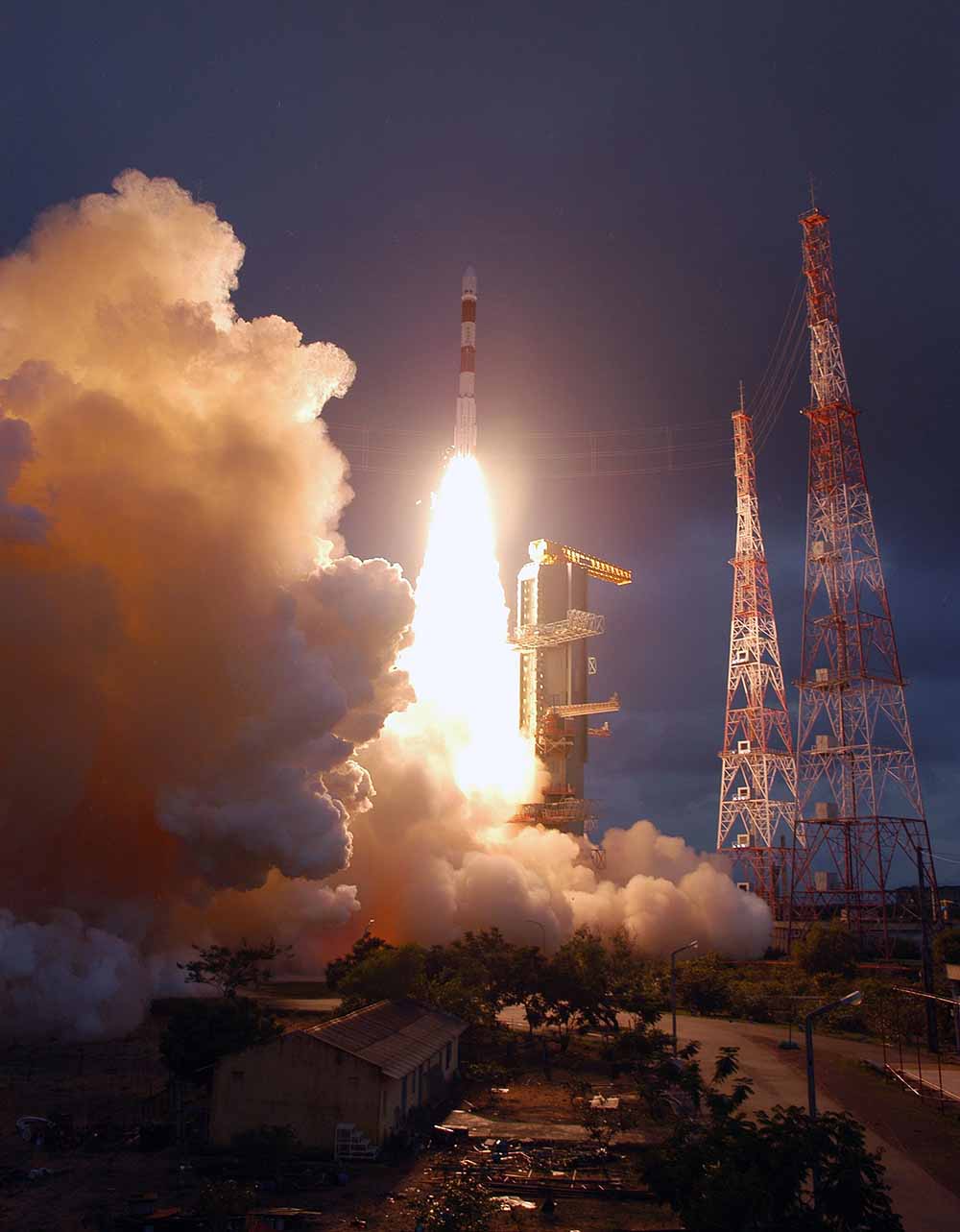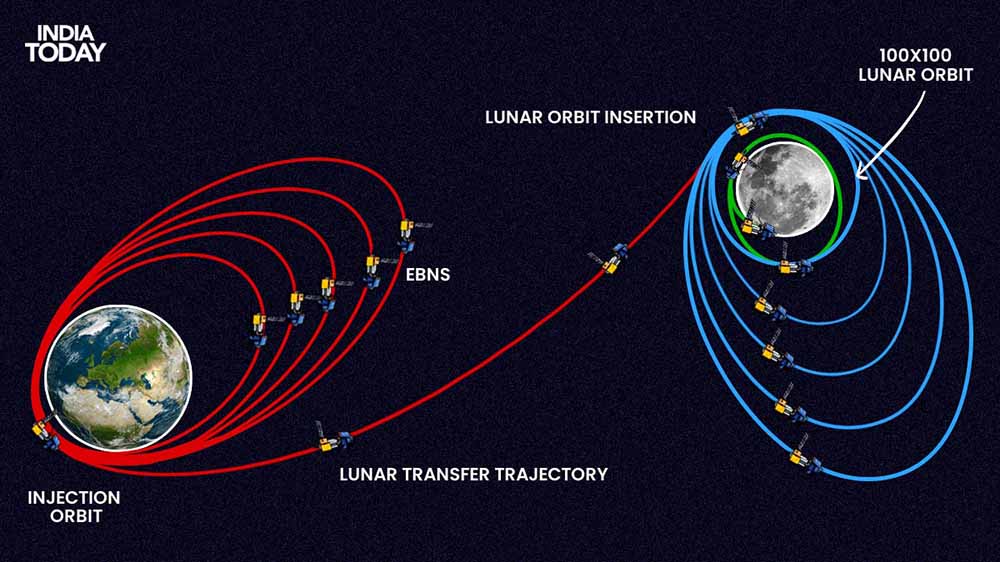India’s ‘rocket woman’ aka Ritu Karidhal Srivastava is a senior scientist at Indian Space Research organization (ISRO) and served as the Deputy Operations Director to India’s Mars Orbiter Mission (MOM), Mangalyaan.
The Chandrayaan-2 project in 2019 motivated researchers at ISRO to learn from their experiences and work on their strategy for the current moon mission from the Satish Dhawan space facility in Sriharikota, Andhra Pradesh. The space agency is now prepared to make the giant leap after three years of arduous labour. India will join the United States, Russia, and China as the fourth nation to accomplish this feat, if the landing is successful.
A substantial number of women were involved in the mission. About 54 female engineers and scientists directly contributed to the Chandrayaan-3 expedition. They are associate and deputy project managers and directors of different systems who work at several centres. Under the leadership of Ritu Karidhal, Chandrayaan-3 was successfully launched from the Satish Dhawan Space Centre in Sriharikota, India’s third lunar mission, on July 14 at 2:35 PM IST travelling more than 300,000 kilometres to get to the moon.

Image source: Wikibio
About Ritu Karidhal Srivastava
Ritu Karidhal is born and brought up in Lucknow, Uttar Pradesh. She holds a master’s degree in Physics from Lucknow University and her MTech from the Department of Aerospace Engineering at the Indian Institute of Science (IISc) in Bengaluru.
She has grown up with a fascination for space and during her time in school, she loved collecting news items related to space missions by ISRO or NASA. Karidhal, an aerospace professional who joined ISRO in November 1997, contributed significantly to many of the Indian space organization’s renowned missions. In 2007, she was presented with the ISRO Young Scientist Award by the late Dr. APJ Abdul Kalam, former president of India. She has also spoken at TED talks, where she focused on the Mars Orbiter Mission. She has significantly aided India’s space programme and serves as a huge inspiration for women in STEM professions.
Srivastava has contributed to numerous esteemed ISRO missions, including the Mars Orbiter Mission (Mangalyaan), the Chandrayaan-1 and Chandrayaan-2 missions, the GSAT-6A mission, and the GSAT-7A mission. She has published more than 20 papers in national and international journals.
Awards and accolades of India’s ‘rocket woman’
Srivastava joined ISRO in 1997 and got recognised for her work in science. She has participated in a number of high-profile missions over the years and served as operations director for some of them, showcasing her experience and leadership skills.
She received the ‘Women Achievers in Aerospace, 2017’ award from the Society of Indian Aerospace Technologies & Industries (SIATI).
‘ISRO Team Award for MOM in 2015’
She got conferred with ‘ASI Team Award.’
‘ISRO Young Scientist Award’ presented to her by late former President APJ Abdul Kalam.

About Chandrayaan-3 Mission
Aiming to investigate and study the lunar environment, including its geology, history, and prospective resources, the Chandrayaan-3 mission was launched on July 14. The spacecraft, which consists of the lander Vikram and the rover Pragyan, is intended to conduct a number of scientific investigations on the lunar surface.
The fourth orbit-raising manoeuvre was carried out by the ISRO scientists on July 20, the third on July 18, and the second on July 16, all in preparation for lunar insertion. Each manoeuvre included precisely setting the spacecraft for the upcoming lunar landing while gradually increasing the spacecraft’s speed.
The lander crashed while entering lunar orbit during the Chandrayaan-2 mission, the forerunner of Chandrayaan-3, due to a last-minute problem. On August 23, the Chandrayaan-3 mission hopes to build on the successes of its predecessor by accomplishing a successful landing close to the south polar zone.
On July 14, India’s ‘Bahubali’ rocket successfully launched Chandrayaan-3, a moon probe, into orbit. The 3.8-ton Chandrayaan-3 spacecraft was launched into its planned earth orbit by the nation’s powerful rocket. The rocket is known as Bahubali because it launched the 3.8-tonne Chandrayaan-3 satellite, just like the successful movie’s hero does when he lifts a big Lingam. Chandrayaan-3 would have a long voyage from there because the earth and moon are separated by a distance of around 3.844 lakh kilometres.

Image source: India Today
According to the ISRO, the Chandrayaan-3 spacecraft is made up of a propulsion module weighing 2,148 kg, a lander weighing 1,723.89 kg, and a rover weighing 26 kg. On August 23 or 24, the unnamed Moon lander is anticipated to make a soft touchdown close to the Moon's South Pole. From a height of around 100 kilometres above the Moon’s surface, it will plummet to the Moon.
As the mission advances, ISRO is unwavering in its resolve to discover new worlds and demonstrate India’s competence in the field of space exploration. Another example of ISRO’s outstanding accomplishments and commitment to furthering space science and exploration is the fifth orbit-raising manoeuvre.
Image source:The News Minute